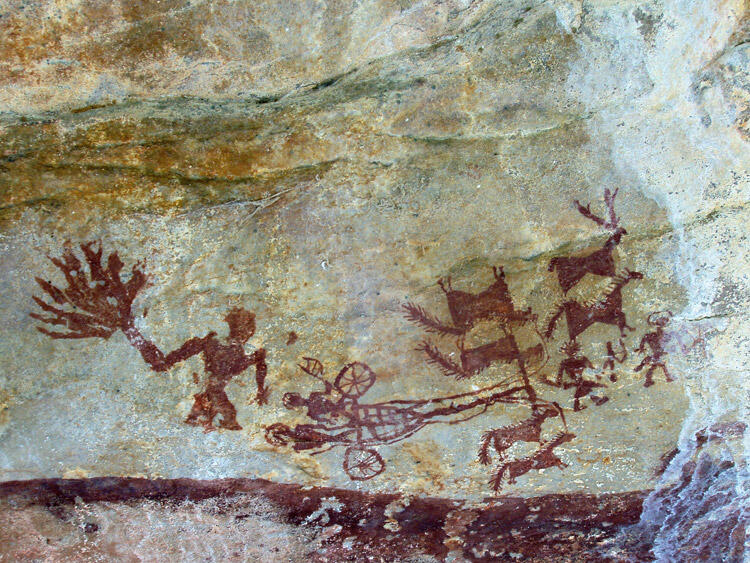In this article Erwin Neumayer studies the rock paintings from sites in Madhya Pradesh, Karnataka, Uttar Pradesh and Rajasthan to investigate the role and types of the chariot. Based on writing and other artefacts (such as the copper hoard) he offers a date between 1800-1200 BC for these paintings, however whether these dates relate to the paintings remains unconfirmed. Within the realm of symbolism, he posits that these chariots could be read as vehicles of the Gods and Heroes, and the animals as fantastical creatures and chimeras.
Of course the wheel persists as one of the most enduring of ancient motifs, represented later in the Buddhist chakra and Gandhi's spinning wheel.
Within the Harappan civilization, there are numerous depictions of wheels on seals, as well as clay figurines in the shape of bullock carts and wheeled animals. Mark Kenoyer has discussed these in detail in Wheeled Vehicles of the Indus Valley Civilization of Pakistan and India published previously on Harappa.com.
Erwin Neumayer writes, "It so happens we are dealing with a very elusive object: We have cities as big as the late Bronze Age allowed, alas without horses, but carts and wheels in miniature, wheeled toys and marks of wheels on city roads, with cattle as draught animals alone. All we got from then is a number of toy carts made of clay and one a miniature bronze chariot from Daimabad, the find from an outlaying area of the Harappan Culture Region deep down in the Deccan. It is only this chariot which gives away enough on technological details to understand that the war chariot was known, but the draught animals are still long legged oxen. But there we also see a yoke fit for the neck of horses rather then cattle, and loops at the yoke serving as reign-sorters fit to guide crossed reign trains- a necessity for a fast moving chariot." [Foreword, pp. 1-2.]
Our book review of Neumayer's Preshitoric Rock Art of India (Oxford, 2008).
Photo credit: http://www.bradshawfoundation.com/india/central_india/characteristics_in...

